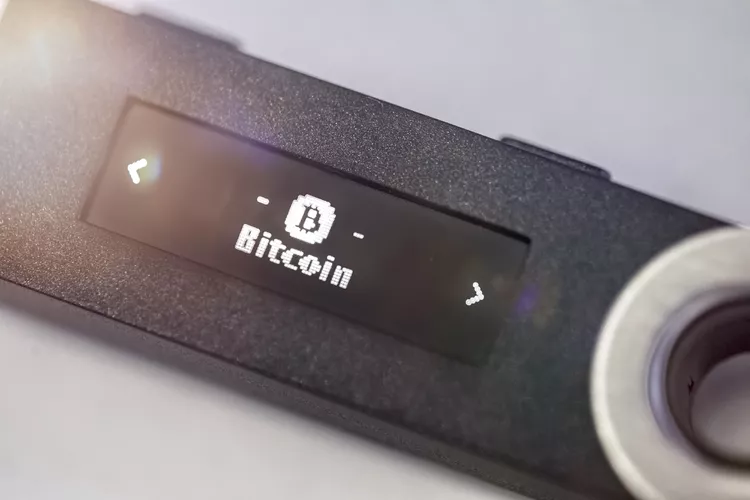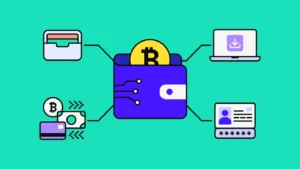
Various cryptocurrency storage options: cold wallets, hot wallets, and paper wallets. Ensure your digital assets are securely stored. image: Westend61 / Getty Images
Cryptocurrency has revolutionized the financial landscape, but storing it safely remains one of the most critical aspects for any investor. Without the right storage strategy, you risk losing your hard-earned digital assets to hacks, scams, or forgetfulness. Take, for example, Stefan Thomas, who lost over $200 million worth of Bitcoin due to a forgotten password. This guide will walk you through the essential steps to securely store your crypto and avoid costly mistakes.
Understanding Cryptocurrency Wallets
A cryptocurrency wallet is a digital tool that helps you store your crypto assets, private keys, and public keys securely. Wallets come in different forms, each tailored to specific needs.
- Hot Wallets: Connected to the internet; ideal for frequent transactions.
- Cold Wallets: Offline storage solutions; best for long-term safety.
- Paper Wallets: Physical printouts of your keys; simple but fragile.
Each type offers varying levels of security and convenience, making it essential to choose based on your requirements.
Steps to Store Cryptocurrency
Before diving into the crypto world, ensure you understand how and where to store your assets. Whether through an exchange, a personal wallet, or offline methods, the choice depends on your needs for security and accessibility.
- Research wallets and exchanges.
- Compare security features and costs.
- Create a storage plan that aligns with your investment goals.
Storing Cryptocurrency on an Exchange
Exchanges like Coinbase, Binance, and Kraken provide built-in hot wallets for users. Here’s how to store crypto on an exchange:
- Research and Choose an Exchange: Look for platforms supporting multiple cryptocurrencies and offering robust security measures.
- Create an Account: Provide details for identity verification, including government-issued ID and proof of address.
- Deposit Funds: Use your wallet address provided by the exchange to store purchased crypto securely.
While exchanges are convenient, they’re prone to hacks. It’s best to limit the amount stored here if you’re not trading actively.
Cold Storage Wallets
Cold wallets, such as the Ledger Nano X or Trezor Model T, keep your crypto offline, making them less vulnerable to hacking.
- Purchase a cold wallet device.
- Install accompanying software on your computer.
- Generate a unique wallet address and back up your recovery phrase.
- Transfer crypto from your exchange to the cold wallet.
Cold wallets are excellent for large holdings but require diligent care to avoid losing the device or recovery data.
Hot Wallets
Hot wallets, like Exodus or Mycelium, are accessible and user-friendly, ideal for daily transactions. Setting one up involves:
- Downloading and installing the wallet app.
- Completing any required KYC verification.
- Adding the cryptocurrencies you want to store.
- Safely depositing crypto into the wallet.
Though convenient, hot wallets are more susceptible to malware and phishing attacks. Use strong passwords and enable two-factor authentication for added security.
Paper Wallets
Paper wallets offer a simple, offline solution for cryptocurrency storage. They consist of printed private and public keys, often generated via a secure online tool.
- Use a Secure Computer: Ensure the device is malware-free or use a freshly formatted system.
- Generate Keys: Visit a reliable paper wallet generator and create unique wallet credentials.
- Print and Store Safely: Print the wallet, fold it carefully, and keep it in a secure, dry location.
- Transfer Crypto: Send assets to the printed address for long-term storage.
While paper wallets are inexpensive, they are vulnerable to physical damage, theft, or misplacement. Always create backups and handle them with care.
Key Factors in Choosing a Wallet
Selecting the right wallet is critical for safeguarding your investments. Key considerations include:
- Security Features: Look for options with two-factor authentication, encryption, and strong password protection.
- Accessibility: Hot wallets offer immediate access, while cold wallets require more steps to retrieve funds.
- Supported Cryptocurrencies: Ensure the wallet supports the tokens you plan to store or trade.
Best Practices for Crypto Storage
Proper management of your cryptocurrency wallet can minimize risks significantly.
- Regularly update your wallet software for the latest security patches.
- Store recovery phrases in multiple secure locations.
- Avoid sharing wallet details or private keys with anyone.
For added protection, consider splitting assets between hot and cold wallets based on usage frequency.
Risks of Different Wallet Types
No wallet type is entirely risk-free. Here are the common vulnerabilities:
- Exchanges: Prone to hacking and service disruptions.
- Cold Wallets: Susceptible to physical damage or loss.
- Hot Wallets: Targeted by malware and phishing scams.
- Paper Wallets: Vulnerable to wear and tear or theft.
To mitigate these risks, diversify your storage methods and maintain backups.
Understanding Cryptocurrency Accounts
Setting up a cryptocurrency account is straightforward but requires some basic documentation. Most platforms ask for:
- Name and contact details
- Government-issued ID
- Proof of address
These steps are part of the Know Your Customer (KYC) process, designed to prevent fraud and ensure compliance with financial regulations.
Researching a Wallet Provider
Choosing a legitimate wallet provider is crucial to avoid scams. Conduct thorough research by:
- Examining the provider’s website for professionalism.
- Verifying social media accounts and user reviews.
- Ensuring transparency about ownership and operations.
Avoid platforms with unclear policies or numerous negative reviews.
Types of Cryptocurrency Exchanges
Understanding the nature of exchanges helps in making informed decisions:
- Centralized Exchanges (CEX): Operated by a third party, offering high liquidity but lower privacy.
- Decentralized Exchanges (DEX): Enable direct trades without intermediaries, prioritizing user privacy.
- Hybrid Models: Combine features of CEXs and DEXs for a balanced approach.
Choose an exchange type based on your need for convenience, privacy, and control.
FAQs About Cryptocurrency Storage
- How Do You Store Large Amounts of Cryptocurrency?
Cold wallets are the safest option for storing significant holdings, offering protection from online threats. - Can You Store Cryptocurrency Offline?
Yes, using cold wallets or paper wallets keeps your assets disconnected from the internet. - Are Cryptocurrency Exchanges Safe?
Exchanges offer convenience but are not entirely secure due to hacking risks. Use them for transactions, not long-term storage. - Can You Store Multiple Cryptocurrencies in One Wallet?
Most wallets support multiple currencies, but confirm compatibility before use. - What Are the Different Types of Cryptocurrency Exchanges?
Exchanges are categorized as centralized, decentralized, or hybrid, each with unique benefits and drawbacks.
Conclusion
Storing cryptocurrency securely is a cornerstone of successful crypto investment. By understanding wallet types, recognizing risks, and implementing best practices, you can safeguard your digital assets effectively. Remember, the balance between security and accessibility is key to navigating the crypto world confidently.





